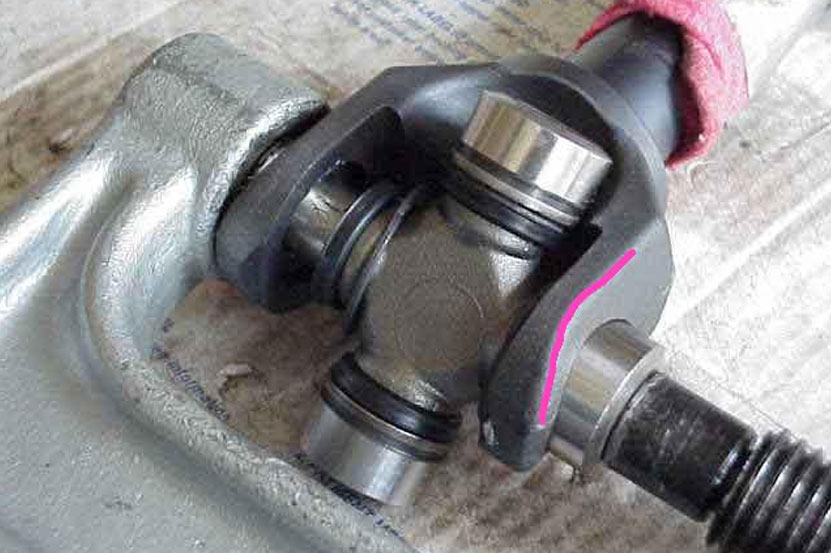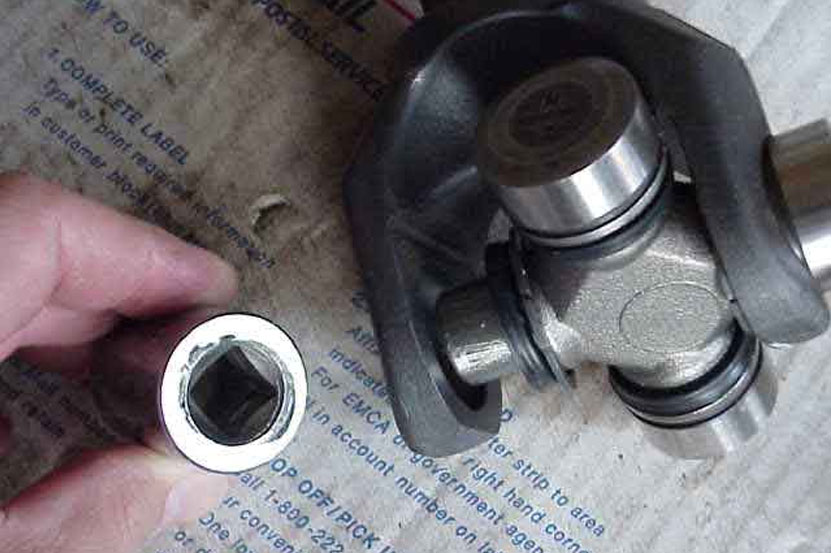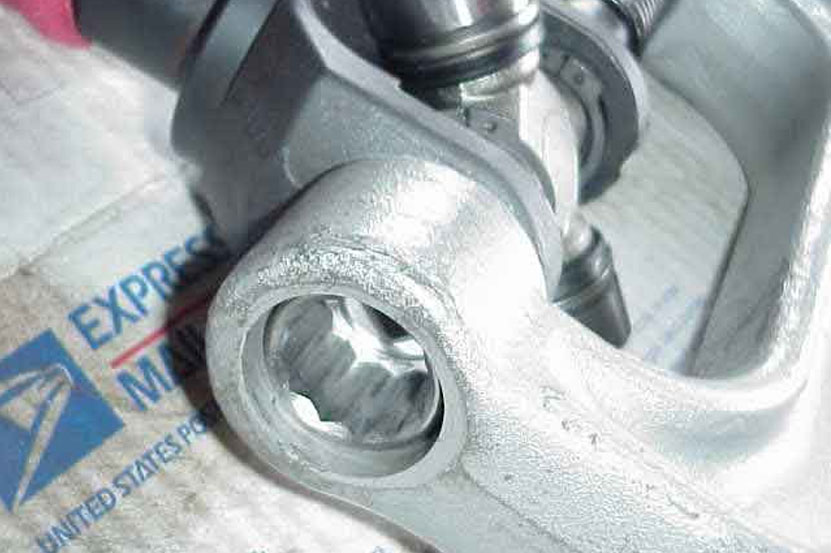If you’ve checked out my other axle or drive shaft articles, you might have seen me mention the Harbor Freight U-Joint tool. It’s great for U-Joints and does a solid job on ball joints, too!
After using it for over a year, I faced a tricky task while upgrading my Warn hub. The Warn alloy inner shafts and tough outer stub shafts meant fitting the u-joint was a real challenge. It took longer than the entire hub conversion! Along the way, I picked up a few handy tricks that also make regular axle work easier. Let me share them with you.

In the picture, you’ll notice the line I marked on the Warn yoke. The yoke isn’t flat on the outside—it’s curved on both sides, which makes it tricky to keep the HF tool steady when tightening it. It tends to slip a bit, causing the cap to go in at an angle and everything gets tightly bound up (been there, done that, no t-shirt needed). Scott K. and I wrestled with this problem during our work on the Warn hub conversion project.
We had a breakthrough on cross shaft #3 (oops!). We realized that if we keep the clamp’s big opening centered on the yoke, everything stays aligned. It makes pressing the bearing caps onto the u-joint shafts a whole lot easier.

I used a Craftsman 7/8″ half inch drive socket, as you can see in the photo. Here, I’m about to fit the bearing cap into the yoke on the right side. I’ve moved the u-joint all the way to the right so it’s just inside the needle bearings of the cap. You want to be careful not to dislodge any bearings, or you’ll have to start over right after you’ve almost finished putting it all together!

Notice how the 7/8-inch socket fits perfectly into the yoke’s hole. The end of the u-joint, a 297 Spicer in this case, fits into the 1/2-inch drive notch, helping center it within the yoke. Since there’s no pressure on the socket, you’ll need to keep it against the u-joint shaft by pushing it or getting a friend to help. The socket acts as a guide for the u-joint tool, keeping the large opening centered over the yoke hole. As you push the u-joint in from the right, the socket naturally moves through the u-joint tool’s opening.

This picture shows how well the socket keeps the tool centered. It helps align everything when tightening the screw on the u-joint, making the task a bit easier.
